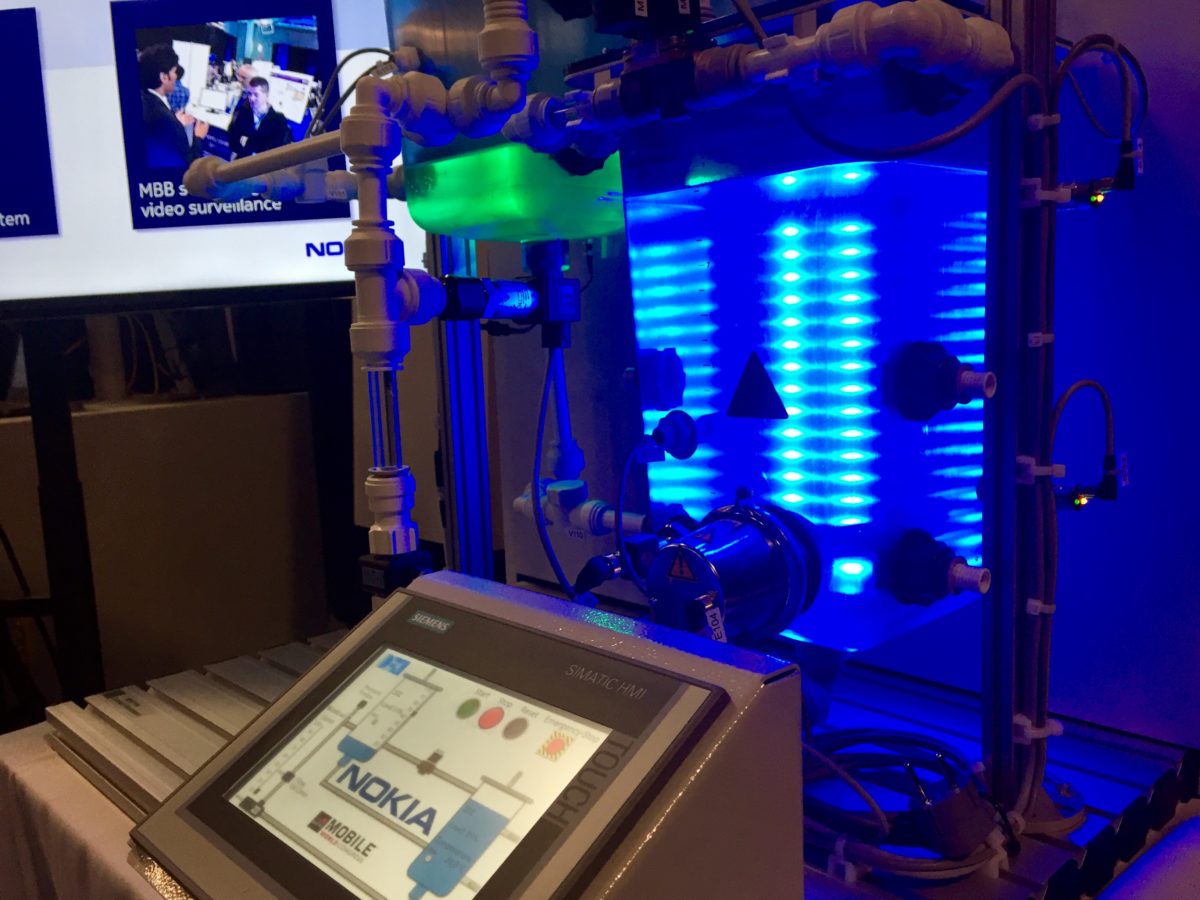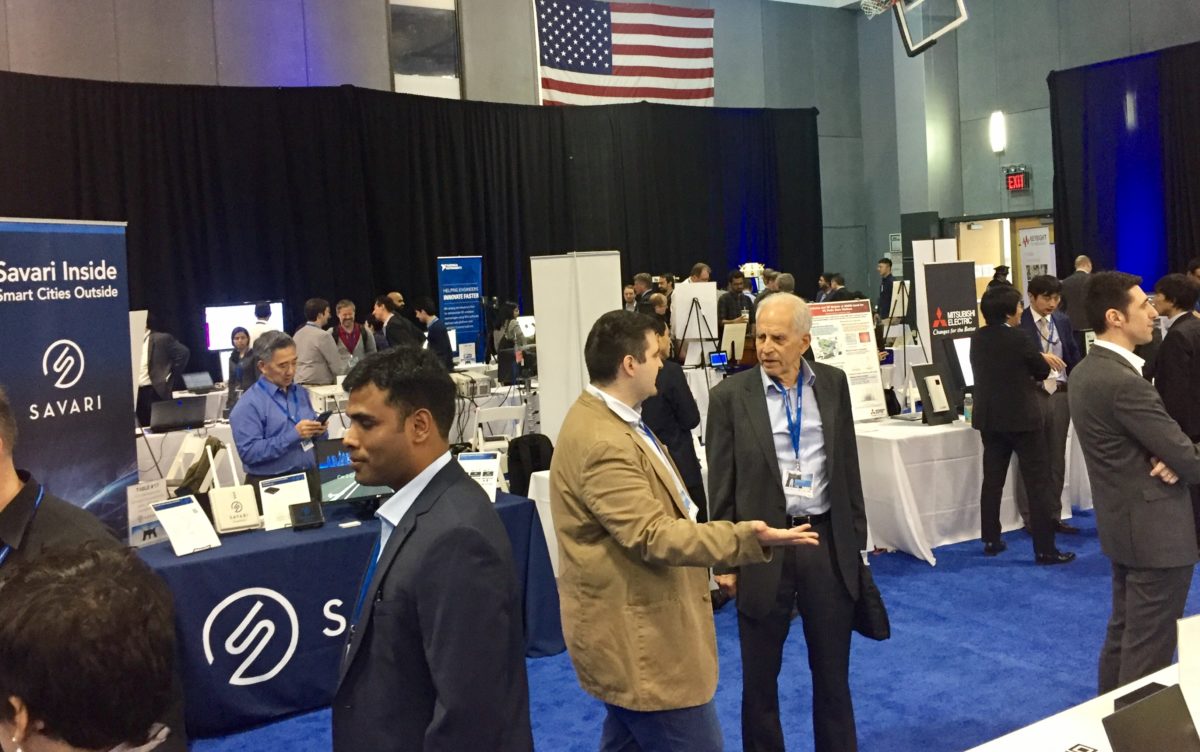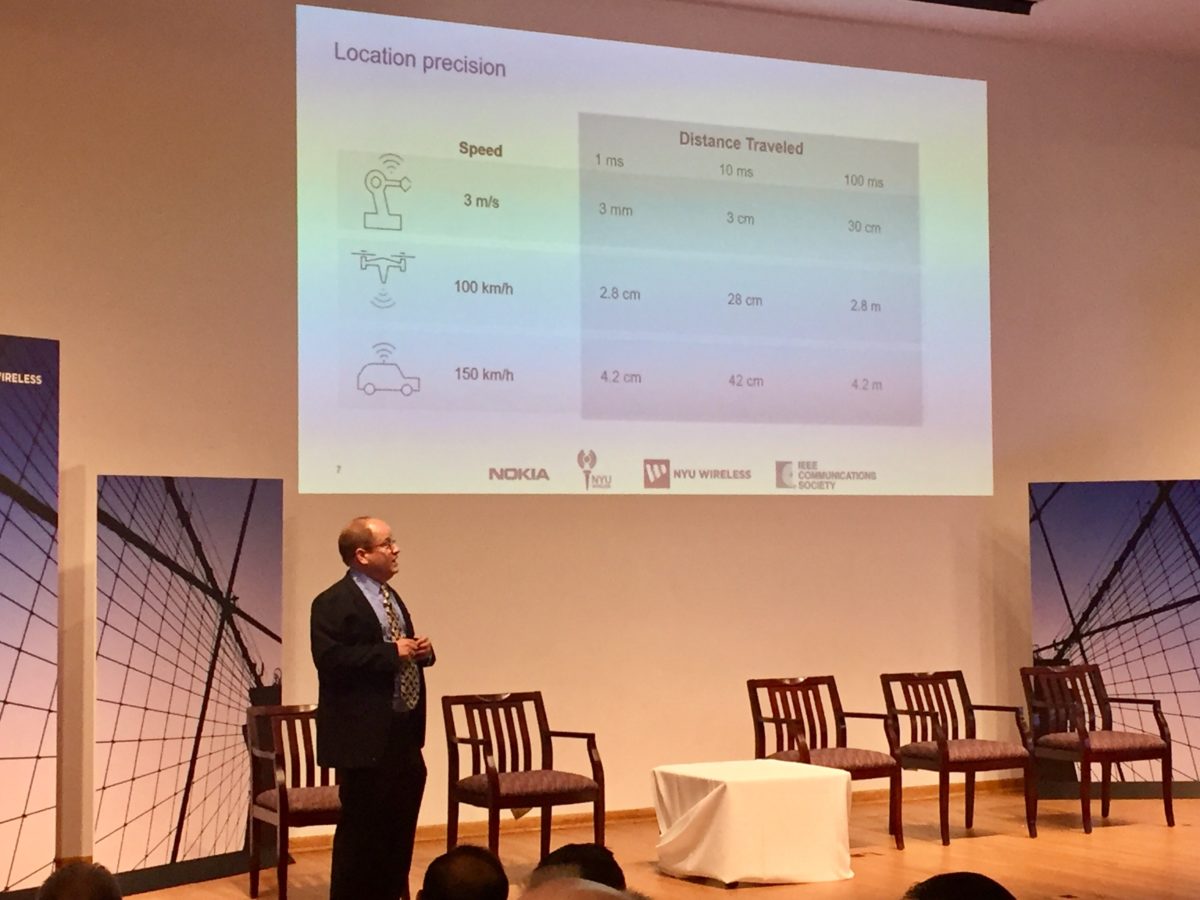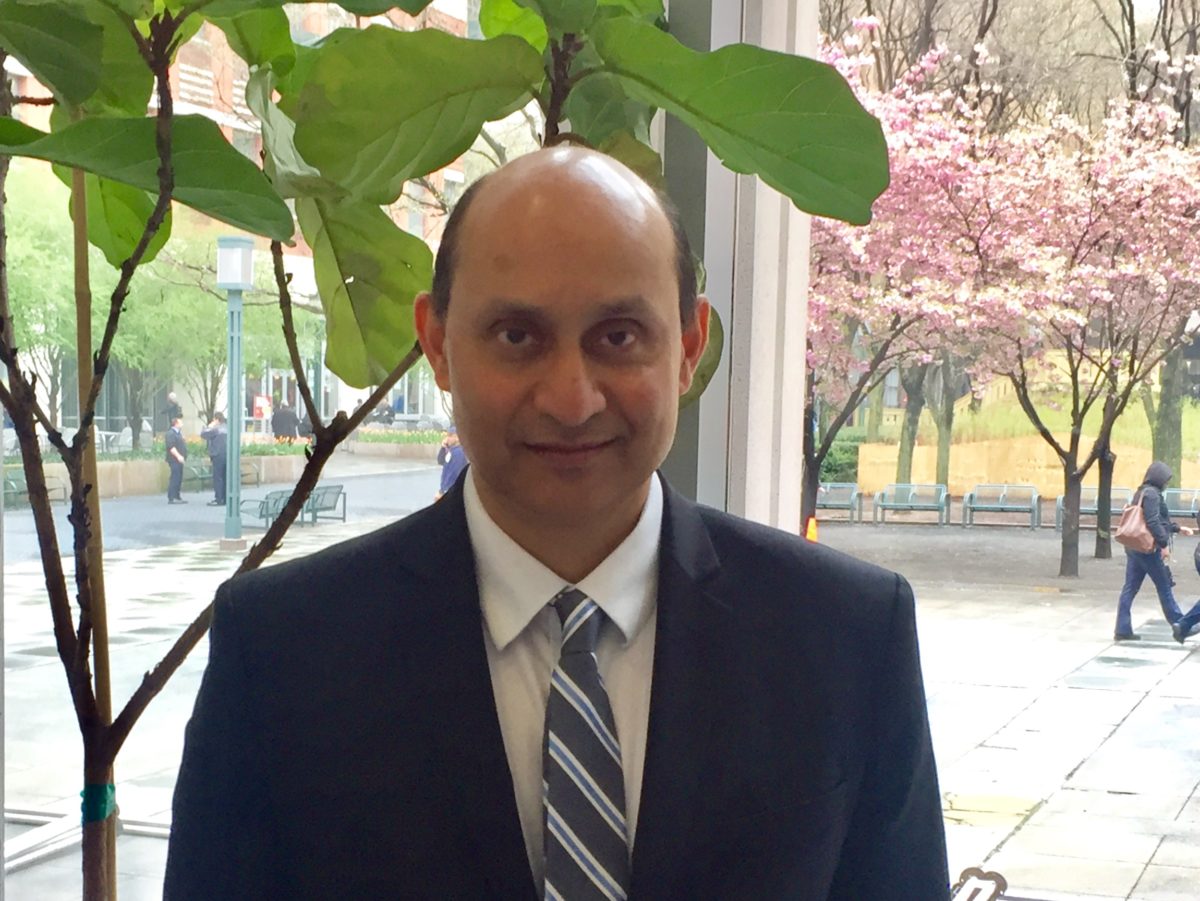When we move from 4G wireless to 5G wireless it will be like society having a “digital nervous system limited only by device physics, chemistry, materials and the speed of light.”
So, at least, says Dr. Kenneth C. Budka, a senior partner at the consulting arm of the storied Bell Labs (which was acquired by summit co-sponsor Nokia in 2015). Budka, and others who spoke at the event Thursday envisioned a future where cell data is so fast, strong, and quick, that the equivalent of super powered WiFi will be all around us, unconstrained by routers and modems and fiber cable. That vision has a lot of impact for the kinds of technology that could thrive in such an environment.
Budka was speaking at the 4th annual Brooklyn 5G Summit, held at the NYU Tandon School of Engineering. This year’s Big Question: How close are we to making this real?
In an auditorium full of Ph.D.s, that question can be taken a number of ways, but in terms of realizing the technology everyone talked about, the answer seemed to be between 2019 and “who knows, these things are complicated.”
It would be good here to talk about what 5G even is.
Dr. Durga Malladi, a senior vice president at Qualcomm, who gave the day’s second keynote address, explained the progression of the Gs.
“1G to 2G was really analog to voice,” Malladi explained. “2G to 3G, we introduced voice and data. Then we said, ‘We have to do high speed data’ and [with 4G] were excited about 14 mbps, although we didn’t really know who would use all of that.”

A wireless pump demonstration by Nokia showed how engineers could use AR to check on and control industrial technology. (Photo by Tyler Woods)
The same is true of 5G.
With data expected data speeds that are expected to exceed 1 gbps and perhaps get all the way up to 10 gbps, the wires can be removed from everything. The Internet of Things may come on in a big way, autonomous cars will have a reliable medium on which to talk to each other, factory robots currently standing in an assembly line would be able to get up and move around the factory floor.
Budka also talked about the importance of low latency, or the time it takes between a command being issued to it being executed, as a crucial issue facing the prospect of 5G technology. The bandwidth will be huge, but the latency has to be low. None of the robots and autonomous cars work if they’re lagging. He used the example of a tightly packed platoon of autonomous vehicles traveling together. Presently, good latency is considered to be 100 milliseconds. With 5G, the hope is that can be reduced by two orders of magnitude, to 1 millisecond.
“Imagine something goes wrong with the vehicle at the head of the platoon: a tire goes out,” Budka said. “That information can be shared with a network control, which shares with all the cars in that platoon. With access to that type of info at low latencies we can use networks techniques to send commands to individual cars to steer left, steer right, and minimize collision. The difference between 100 ms and 1 ms is half a car length.”

Attendees at NYU Tandon’s 5G Summit check out tables of demos of 5G technology. (Photo by Tyler Woods)
NYU Tandon’s researchers have done pioneering work in how this 5G world will come to be. Under the aegis of NYU professors Ted Rappaport and Sundeep Rangan, and their NYU Wireless program, the team has tested using a much higher part of the electromagnetic spectrum to send 5G signals. (Rangan offered a primer of sorts in an interview with us last year.)
One of the lessons of nearly everyone who spoke, both formally and at lunch and over coffee in the various rooms and hallways of NYU Tandon, was that the truth is, no one knows what the future holds when it comes to 5G, in the same way people didn’t know how the telephone would change the world’s economy or the iPhone would change people’s work lives.
“We always think, ‘What’s the killer application?'” Jason Elliott, a 5G market development manager for Nokia said in an interview. “There is no killer application. We’re building a new network architecture to support all the applications we have today and ones we can’t imagine yet for tomorrow.”
Join the conversation!
Find news, events, jobs and people who share your interests on Technical.ly's open community Slack

